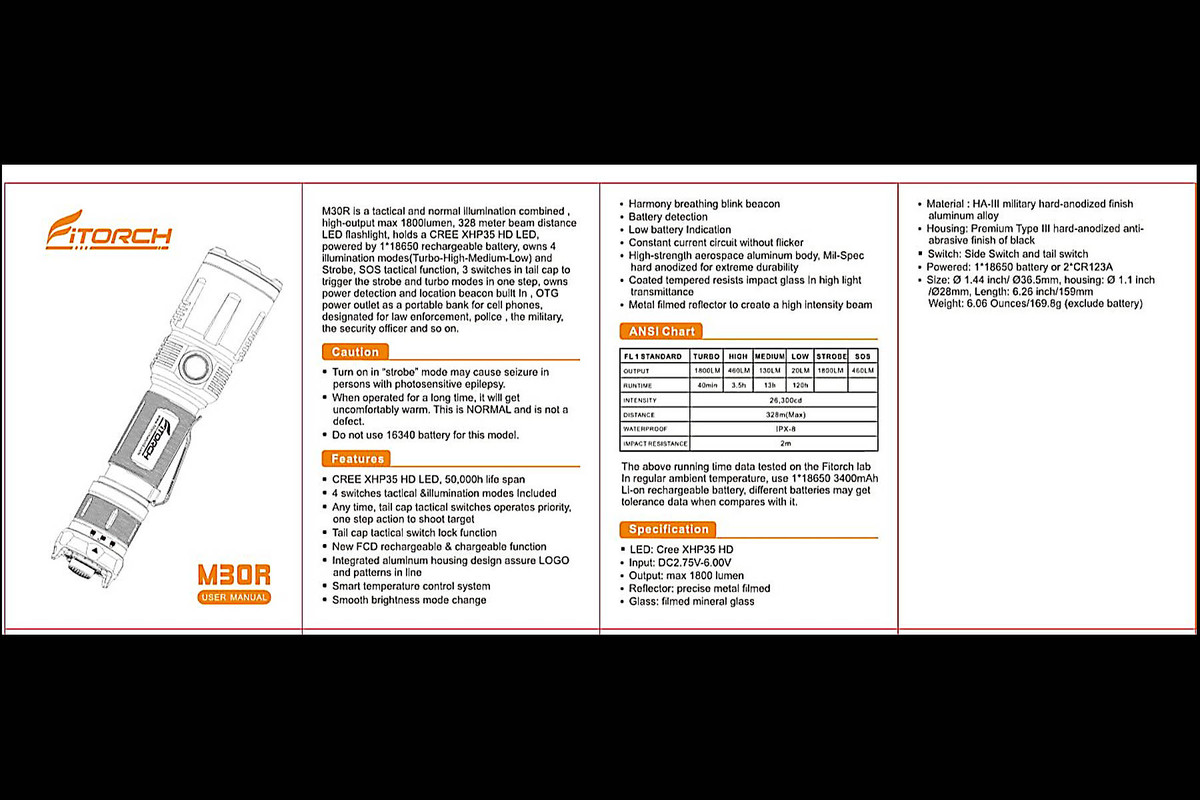Fitorch M30R Review
Fitorch graciously sent me a copy of their model M30R for evaluation purposes. I’d like to extend my thanks to Fitorch for the opportunity.
Banggood lists the Fitorch M30R for $96.69 (as of 6/15/2108)
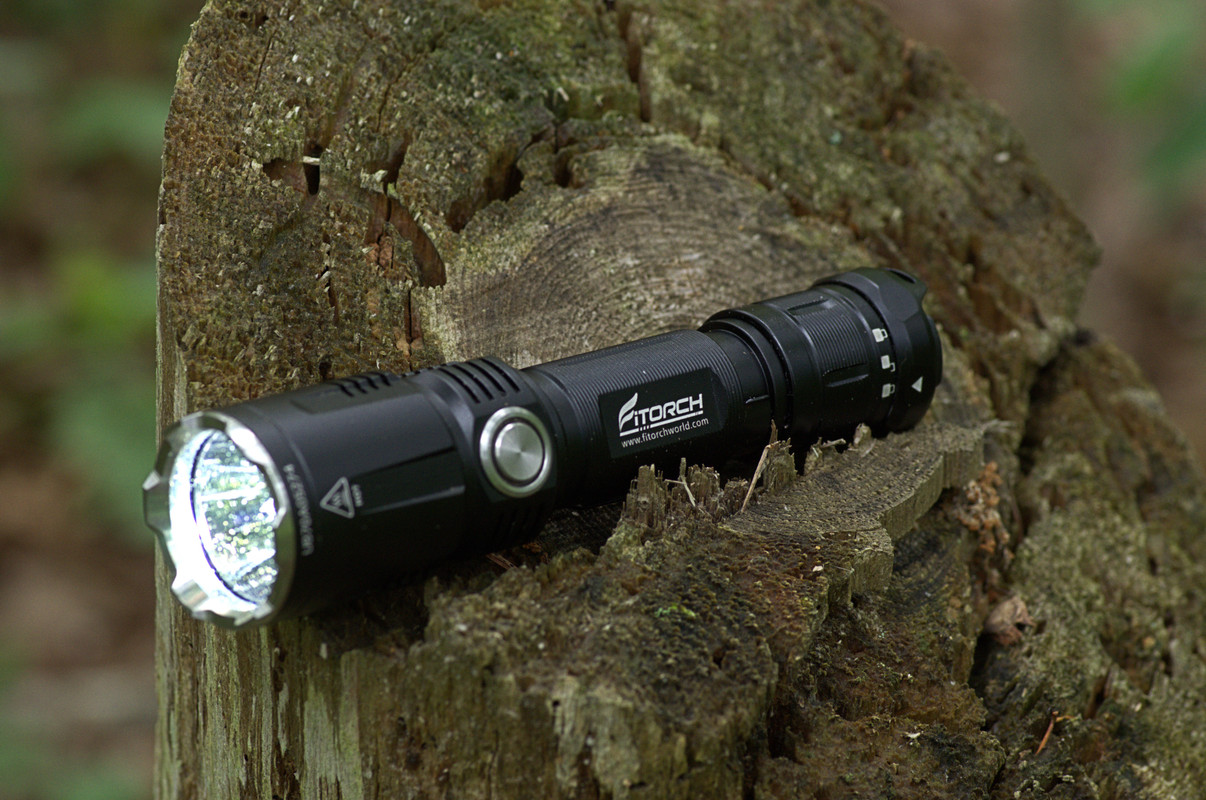
Two things of note before getting into my thoughts regarding the M30R from Fitorch.
- The original copy had issues – it just did not work properly. Immediately, upon contact, Fitorch sent a replacement. I find that a compliment to the company’s character and commitment to the customer. Every company has the occasional defective product slip through; not all companies take immediate action to correct those errors. Kudos to Fitorch for taking immediate, corrective action.
- Fitorch notified me of a problem with the rubber cover over the charging port – explaining that it might not hold up if I tested it under 2 meters of water. Consequently, I did not do any under water tests; but I did use the flashlight in pouring rain, with no ill affects. The issue has been corrected, with all subsequent copies having a cover that tightly seals the opening. Again, I think it is commendable that Fitorch took immediate corrective action.
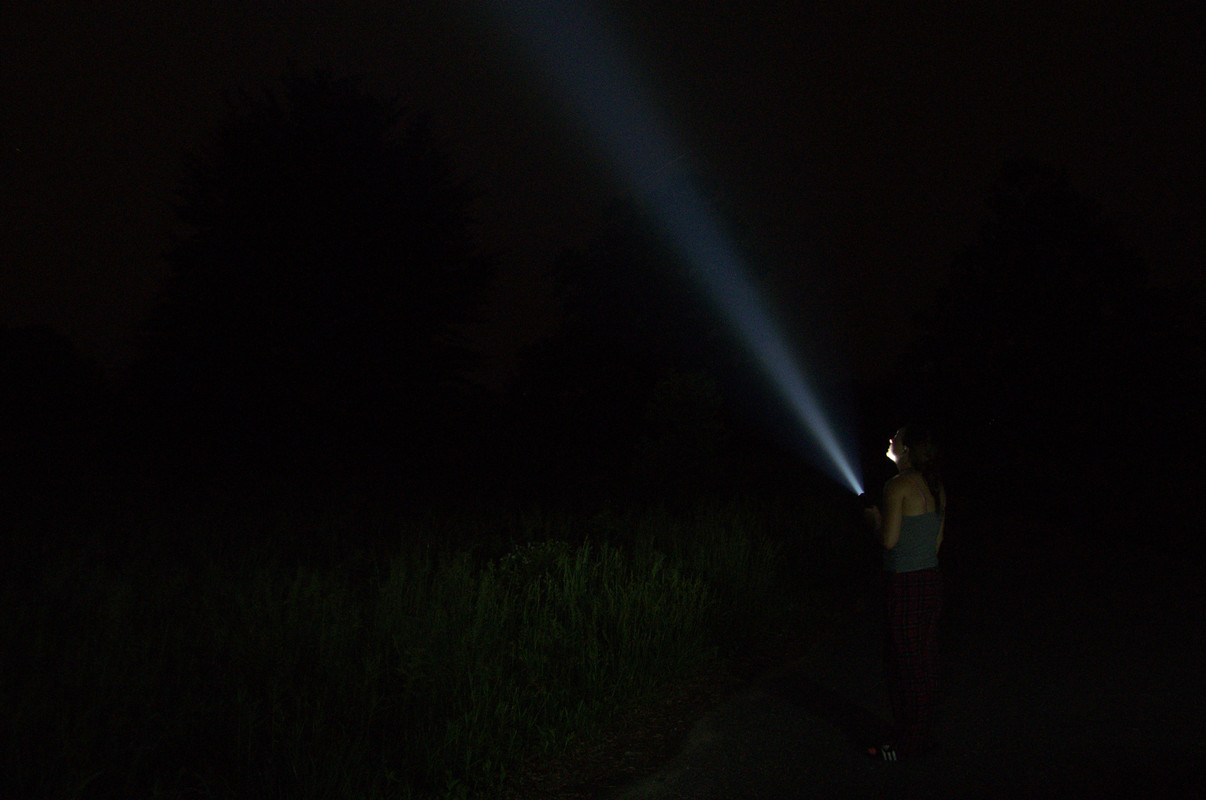
With the target audience being the tactical crowd, I’m a bit outside the user Fitorch is aiming for. The M30R is tactical first, and foremost; however that doesn’t mean it doesn’t have a bunch of features that will appeal to the average Joe (or Jane).
Build quality and finish are the usual from Fitorch – excellent. There are no flaws, no rough areas that might eventually cause the user discomfort. The M30R provides excellent grip, thanks to the body grooves and the fairly robust cooling fins toward the head. Those cooling fins do a very good job of keeping the temperature in acceptable levels, but the head will get fairly warm if you’re using the turbo mode for an extended amount of time. There is a temperature control system, so when things get too hot the light will step down to prevent damage.

At 6.26 inches in length, the M30R is too big for jeans pocket carry (for my tastes anyway). It fits fine in most coat pockets though. This is more of a stash it in your vehicle flashlight than it is an EDC light. If feels great in my hand, and I could easily see the M30R being a favorite work light for a lot of people.
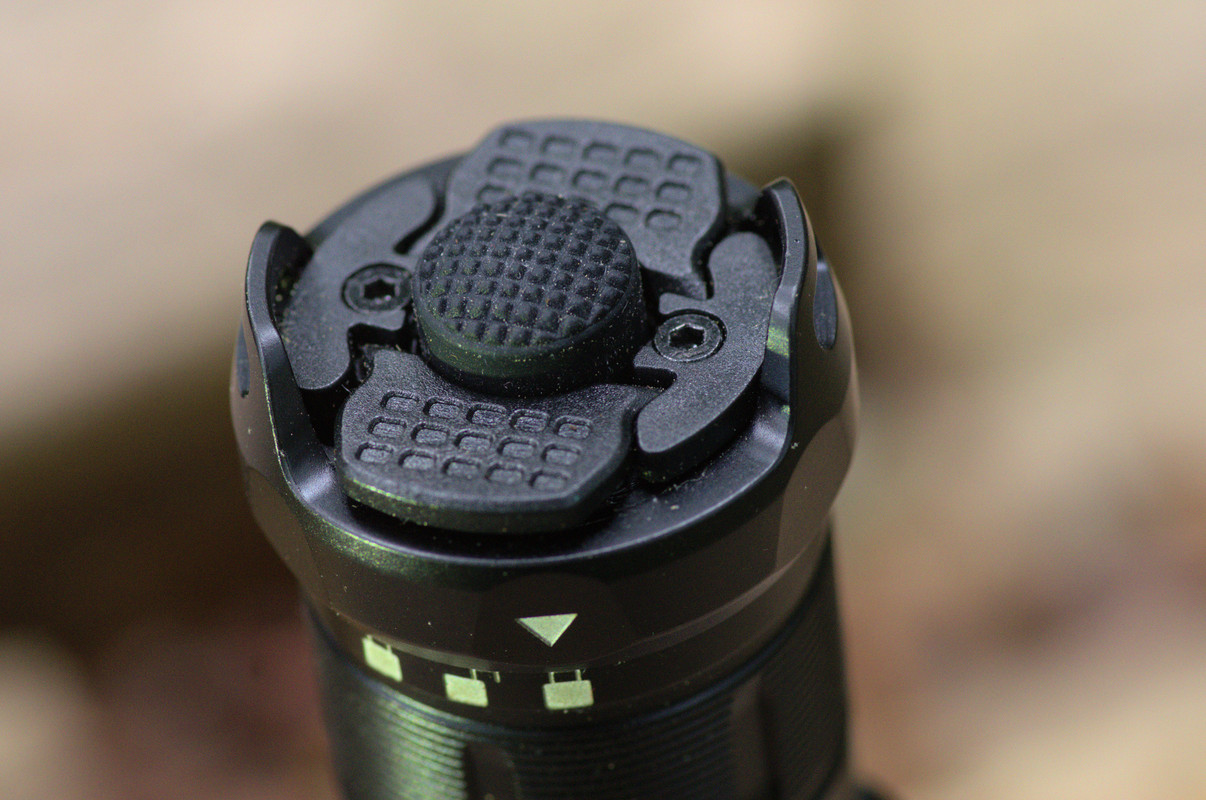
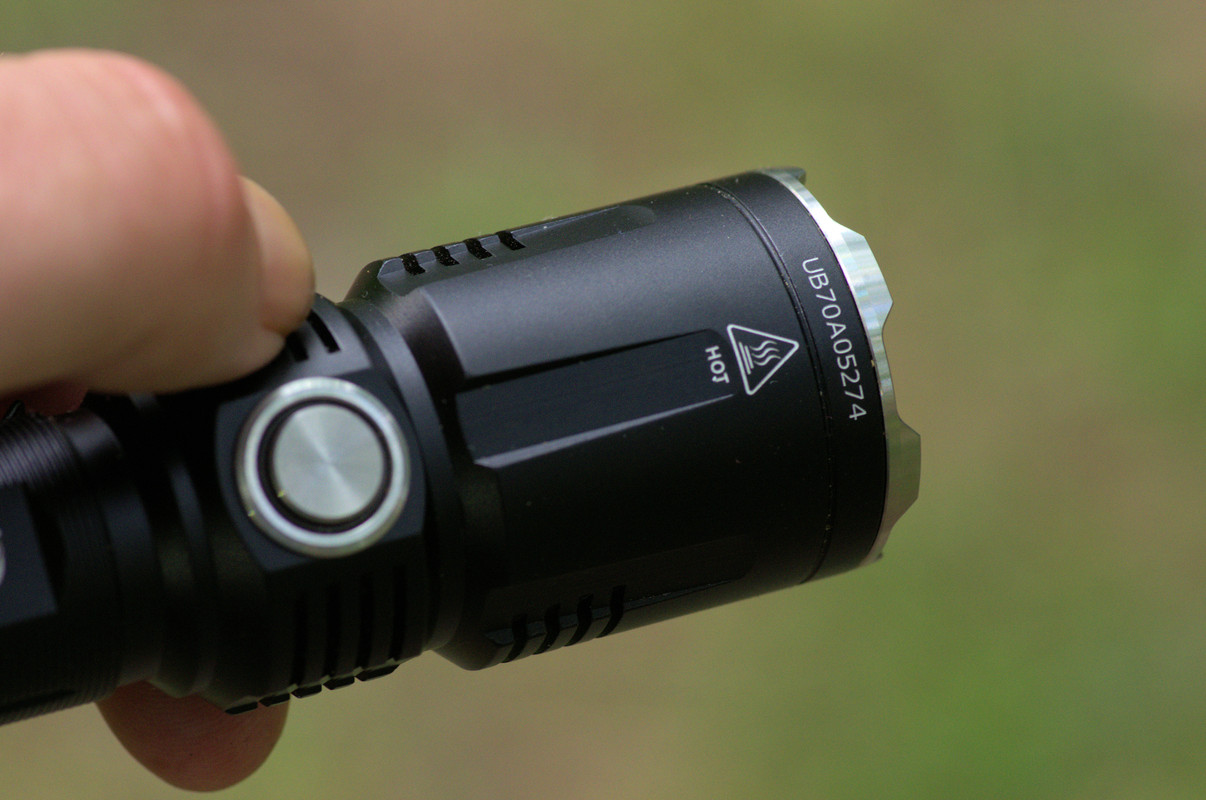
The M30R features four switches in all: the very nicely done metal side switch located near the head, and two paddle switches on the tail. The fourth switch is also located on the tail – it’s the typical button type switch, covered in a rubber cap. The side switch is a bit proud of the body area it is located on: in pitch black conditions it might be a bit difficult to locate until you’re used to the location. I use a trick (of sorts) to help: rotating the included clip so it sits to the right of the side switch (when I’m pointing the head away from my body). Surrounding the side switch is a smooth metal bezel, and in between the switch and the bezel are red and green led lights that give the user information about the battery status (and charging status when plugged in). The side switch has excellent tactile feedback; it also has a very slight audible feedback when clicked. I love the look and the feel of the metal side switch.
The tail cap features three switches: two paddle switches and (in the center of the tail) a button type switch. The button switch is for turbo mode only – press it halfway and turbo is temporarily on. Fully press and release the switch and turbo is on. Click it again to turn turbo off. Covered in a rubber cap, the main tail switch has enough texture to provide good grip (meaning your thumb and/or finger won’t easily slip off the switch). It’s a bit more resistance with the main tail switch, but still provides excellent feedback. The audible “click” is a bit more noticeable (as opposed to the side switch) but still very quiet.
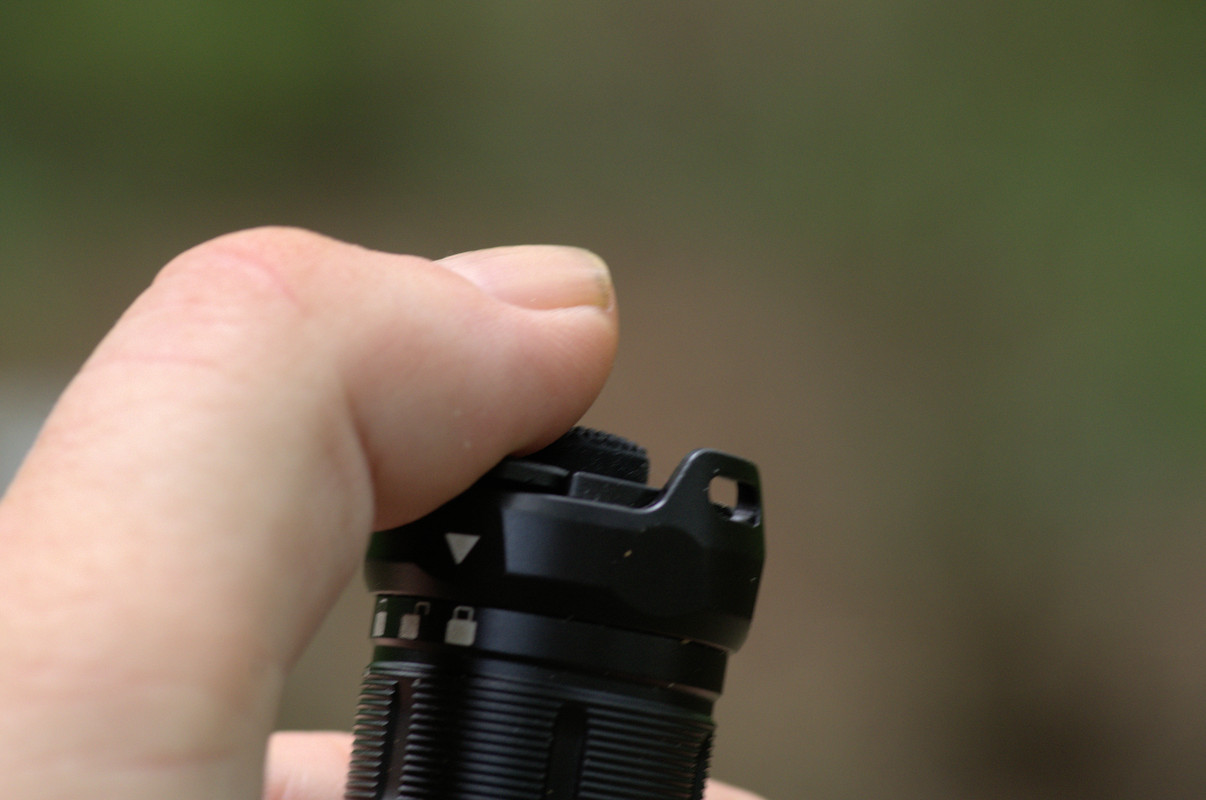
The paddle switches are opposite each other. They have the same job – strobe. A half press brings temporary strobe, while a full press (and hold) and strobe is on. Press and release the either paddle switch and strobe is off. The paddles switches have very little resistance and barely any audible sound when pressed and released.
The tail cap also features a locking mechanism – twist it in either direction and it locks the paddle switches out. The main tail switch (turbo) works regardless of the lock’s position. Quite frankly, I don’t understand the inclusion of the tail lock. It seems like an unnecessary addition to me – given the targeted audience for this light. Assuming the lock is there for users who don’t like strobe (that’s me) I would think it would be easier to offer two tail cap versions – one with the paddle switches that activate strobe, and the other with paddle switches that activate low mode (or no paddle switches at all). I do like the instant access to turbo mode (via the main tail switch).
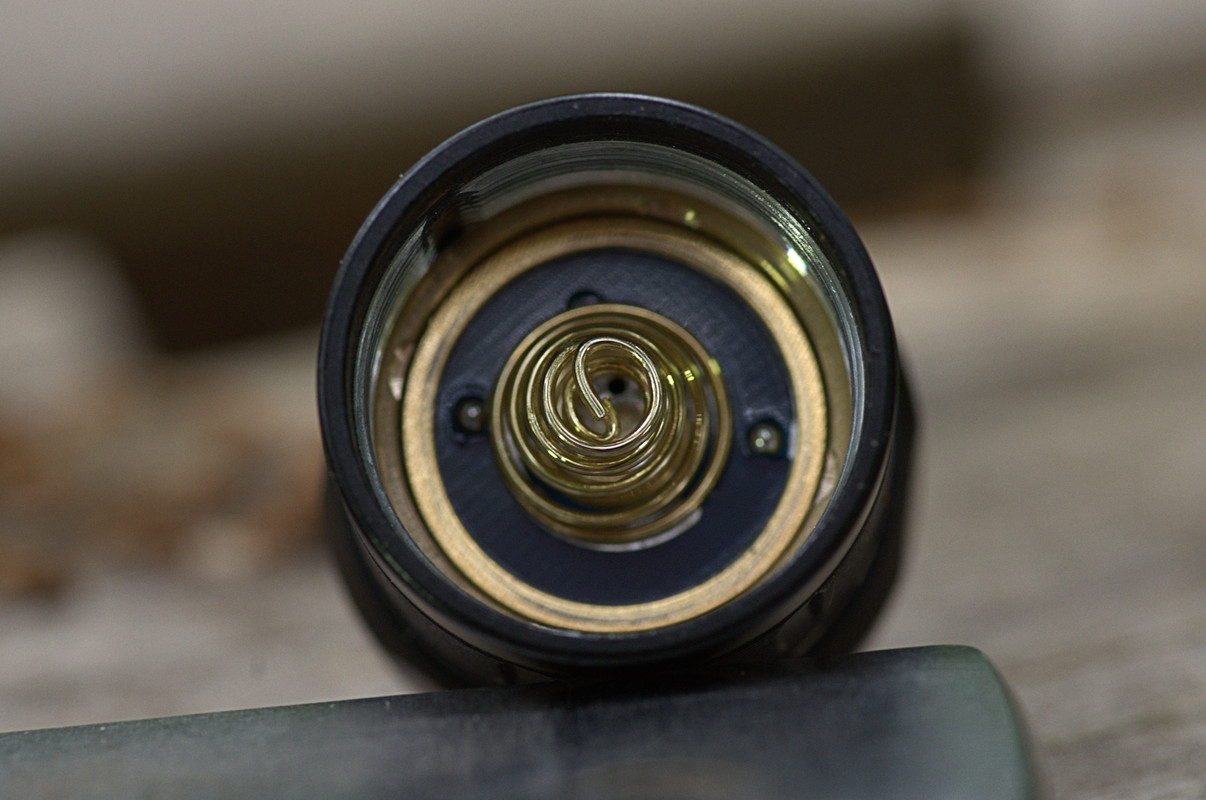
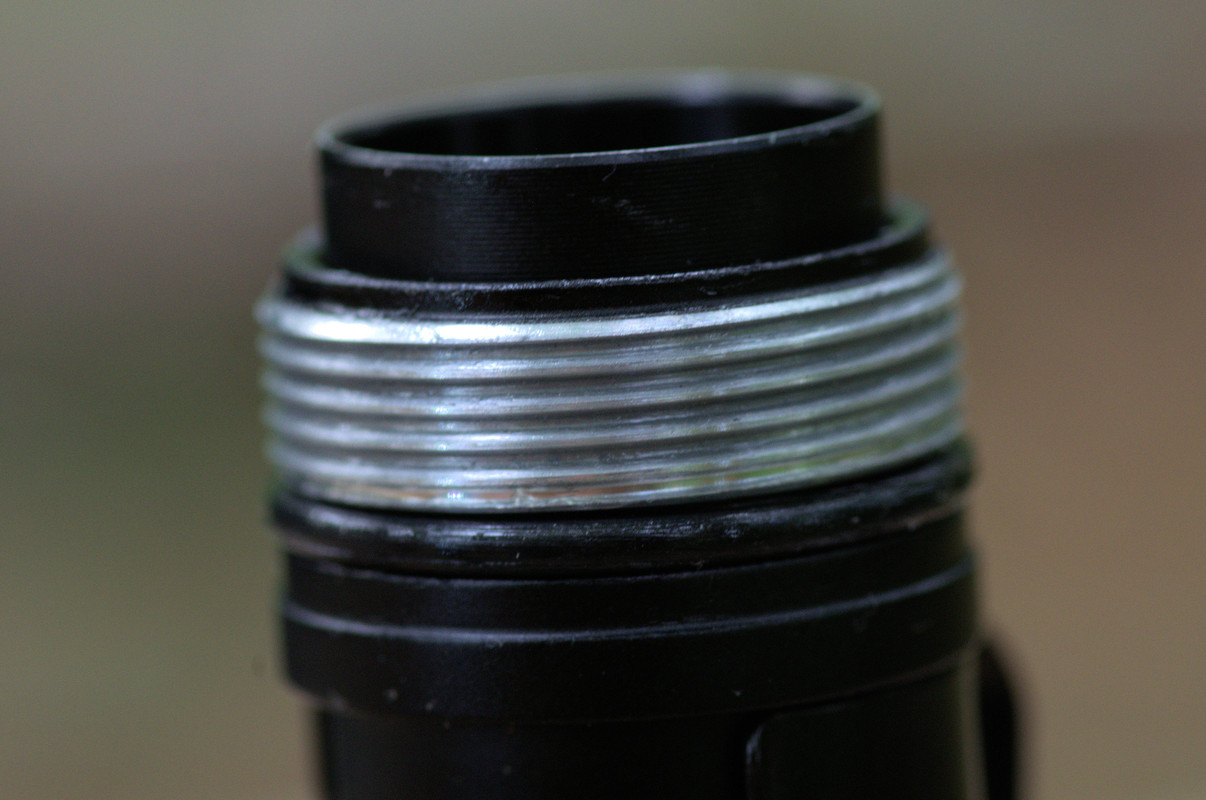
Only the tail cap is removable (the rest of the body seems to be machined out of one piece of aluminum alloy). Inside the cap are dual springs – quite sturdy and very well done. Opposite that, inside the body, is another sturdy spring. The threads are square cut and very well done. There doesn’t appear to be much in the form of lubrication on my sample, but the cap screws on/off without the slightest hint of difficulty. Forget about tail-standing: it isn’t happening.
There is an included clip. It is stout – real stout – to the point that it might be a nail-breaker. I’m a bit baffled as to why the clip is included; since the head is fairly wide, the clip is all but useless in most applications.
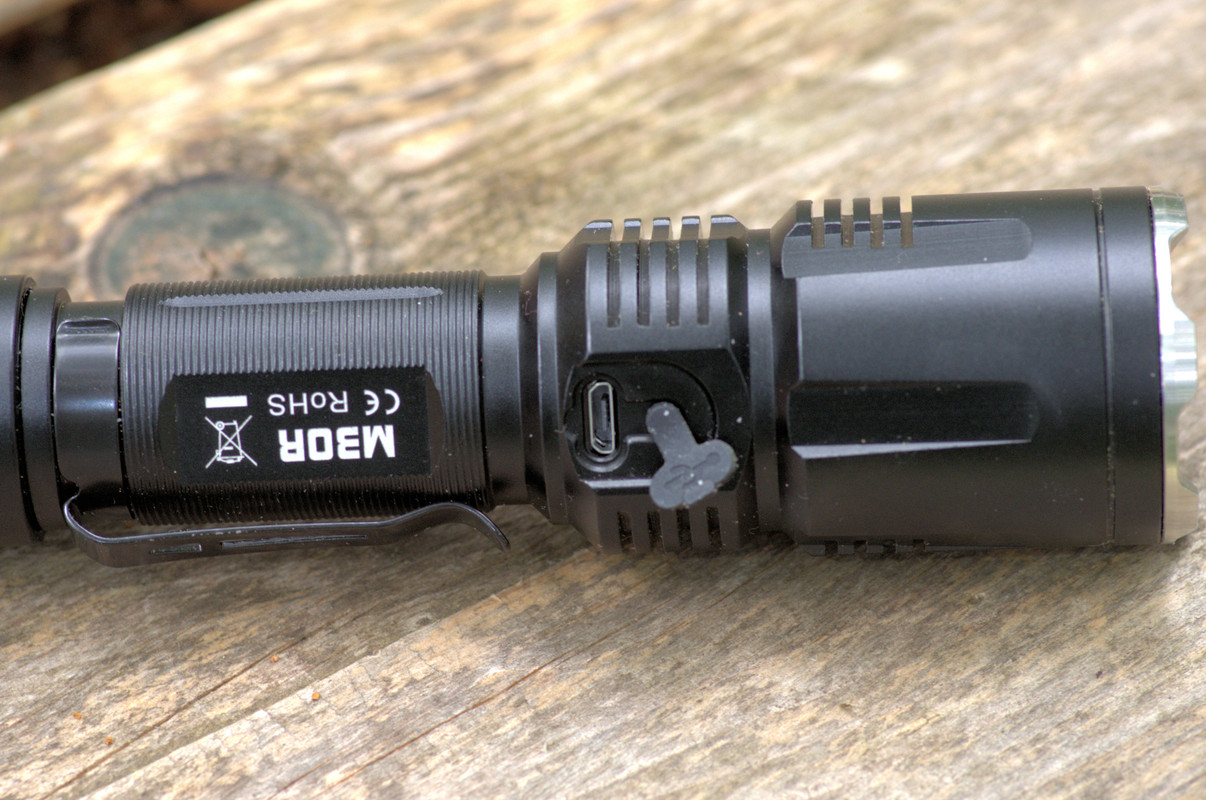
Opposite the side switch is the charging port. My copy has a rubber cap that seals the port from moisture and/or dirt, but that cap has been revised (to perform better) and I have not seen the revised version. For my uses, the cap has held up very well and I have used it quite a bit while it was raining.
One of the features that is sure to be a hit with those who carry a cell phone everywhere (that’s everyone but a couple of us old people) – is the ability to use the M30R as a power bank. The flashlight comes with the necessary dongle – and they include a key-ring so you don’t lose the dongle – just plug it into the charging port on the M30R and then plug a USB cord into the dongle and to the device in need of a charge. Very simple and it voids the need to carry a separate power bank everywhere you go.


On the head of the M30R there’s a crenelated bezel that doesn’t seem to be removable. I couldn’t remove it with my bare hands anyway. The reflector is quite deep and metal filmed. It does a very good job of throwing light.
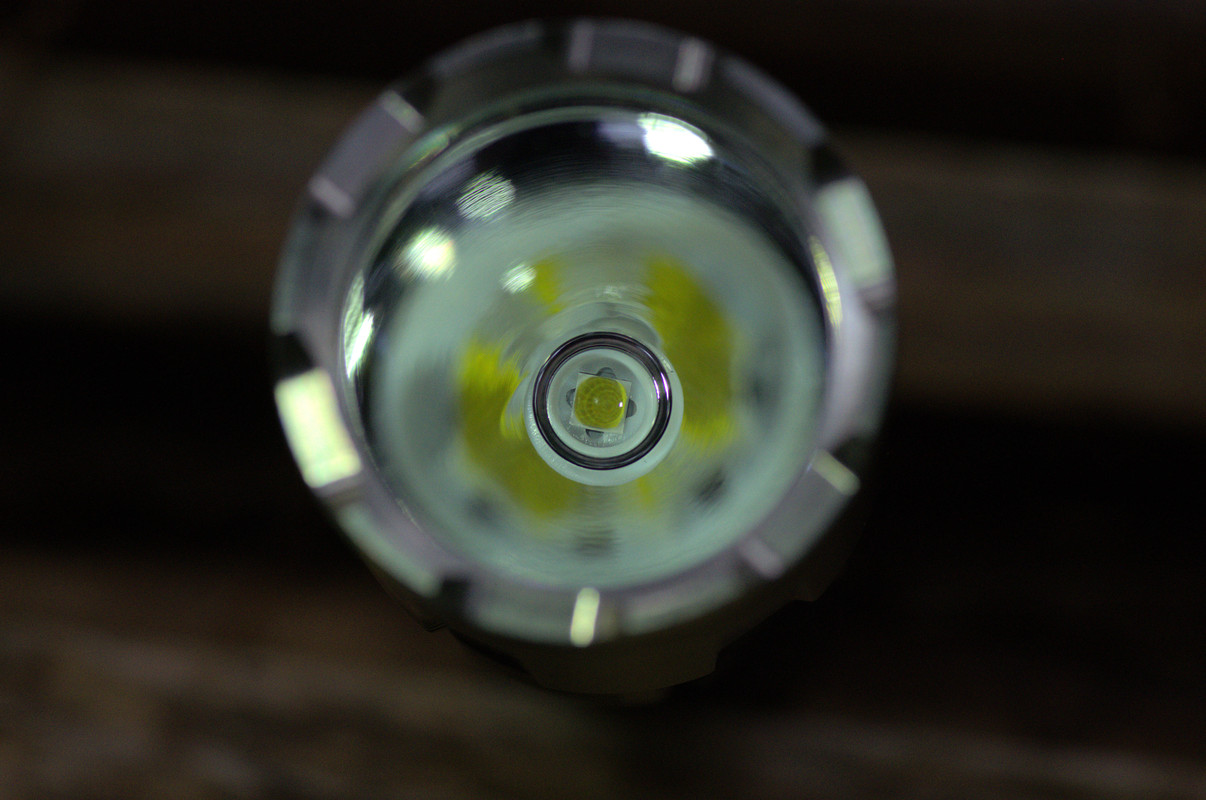
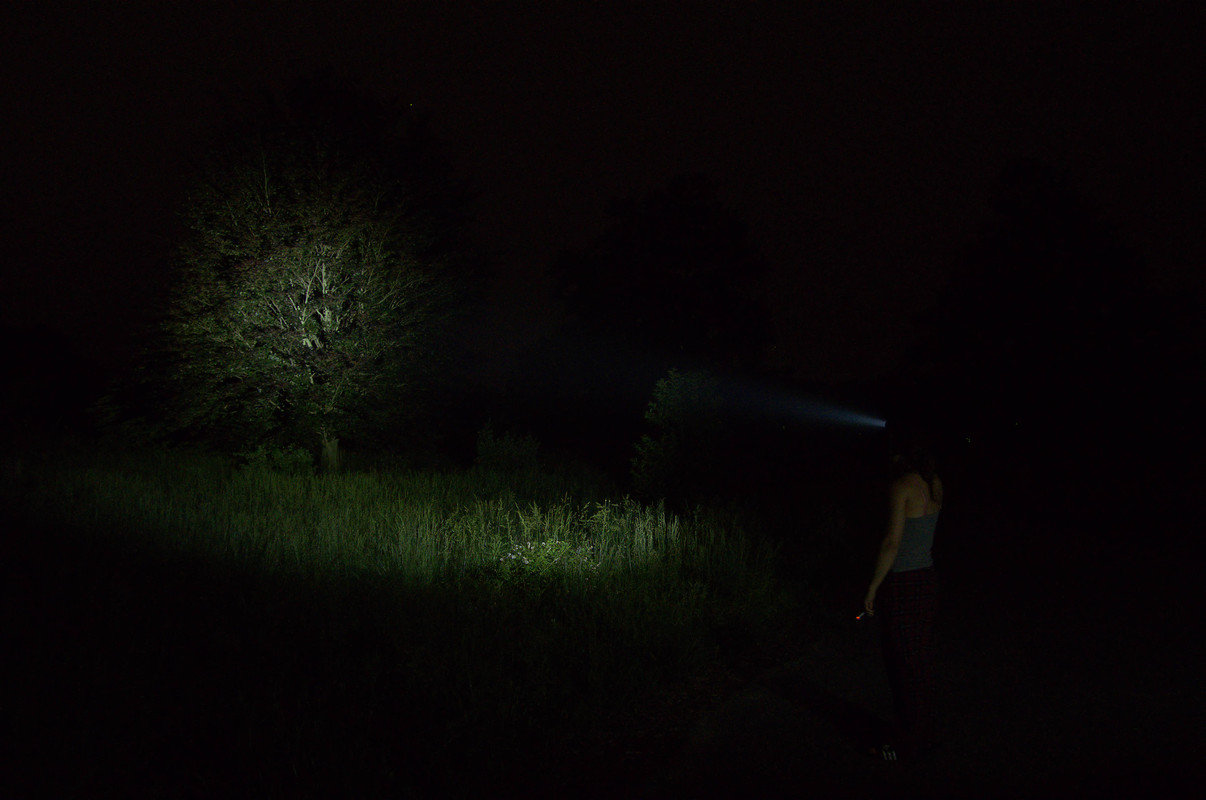
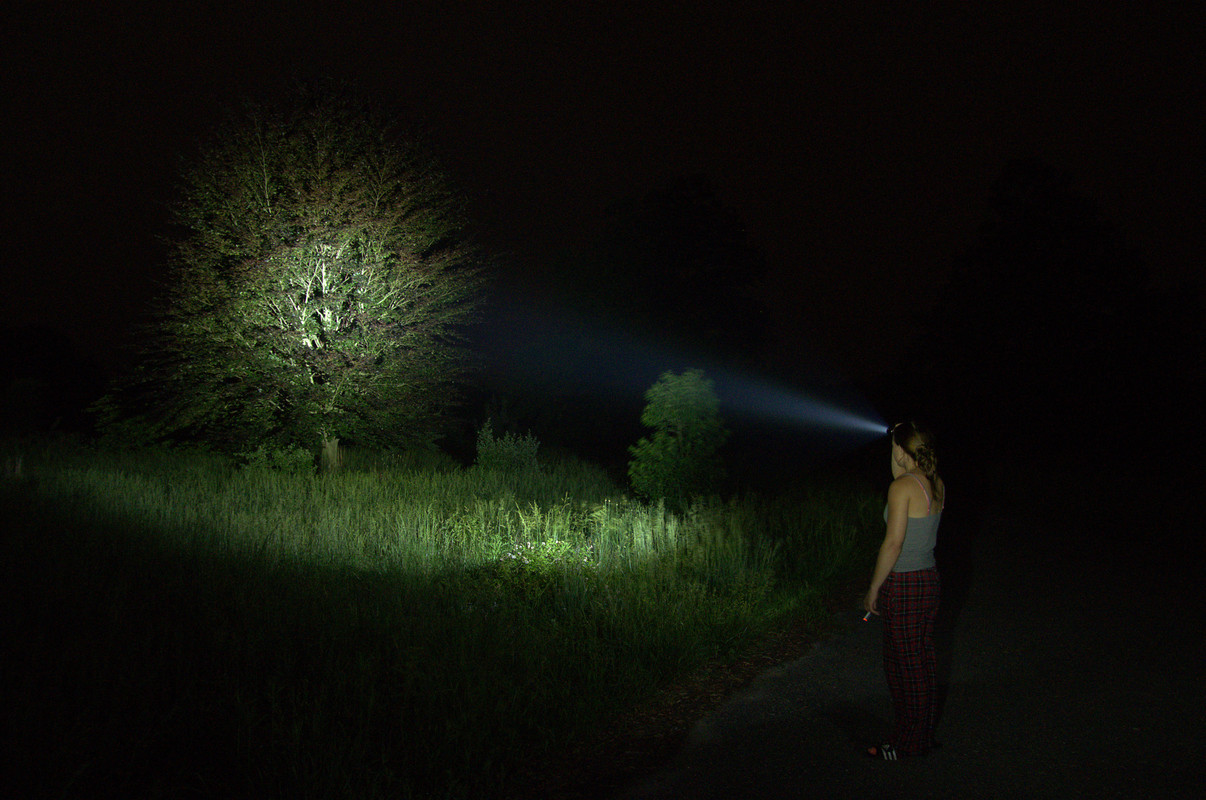
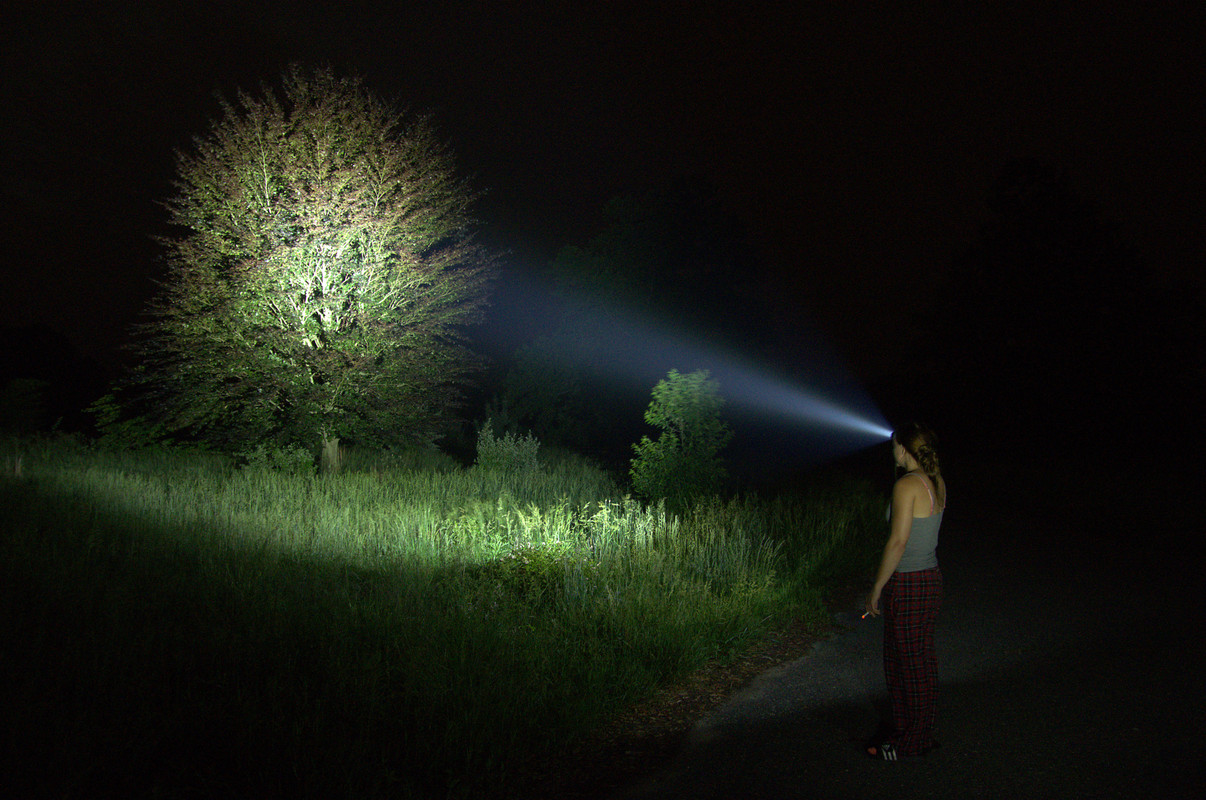
CREE XHP35 HD LED
Fitorch claims a maximum output of 1800 Lumens, with a maximum distance of 328 meters. I think the output claim is probably pretty close to being spot on – based entirely upon comparing the M30R to other flashlights that are somewhat close in claimed output. Usable output is probably closer to the 200 meter mark, or perhaps just a bit less.
Turbo mode is very bright and it will reach out to a good distance. The beam itself is a cool white, and more of a thrower than flood. The spill is very good, with a noticeable hot-spot in the center, and provides very good peripheral vision for the user. The change from hot center beam, to outer spill is somewhat abrupt.
One of my favorite features is something Fitorch lists as “smooth brightness mode change.” It’s somewhat akin to the way gears are properly shifted in a vehicle with a manual transmission; a smooth transfer from one gear to another, as opposed to a sudden jerk into the higher gear. It amounts to a gradual ramping up to the next mode – although it doesn’t take more than a few milliseconds to reach the maximum output for each mode selected. It actually makes it easier on my eyes – letting them adjust to the new output sort of slowly. It is a bit difficult to describe, but the feature is very user friendly, and it works both ways (increasing or decreasing output levels).
I am a fan of the user interface. The side switch is used to choose the regular modes; which are basically a ladder system – go up rung by rung, and then come back down rung by rung. The M30R does have mode memory for the four regular modes (low, medium, high, turbo). Click the side switch to turn the light on. Click the side switch to go through the modes. Double click to enter strobe (or use the tail paddle switch). Double click the side switch again to enter the SOS mode. Click the side switch to go back to the last used regular mode. Press and hold the side switch to turn the light off. Instant access to low mode is had by pressing/holding the side switch for 1 – 2 seconds, then releasing the switch. Instant access to turbo mode is through the main tail switch.

I have not listed all of the features. They can be found in the owner’s manual (link to the manual at the beginning of this review). I’ve also included pictures of the manual; click on the pictures if you’d like to make them larger.
Fitorch geared their M30R toward the tactical crowd. Given the impressive output, the easy, instant, access to the strobe mode; and similarly easy access to the turbo mode, I would think that the M30R will be a popular flashlight with the targeted audience.
I am not that audience; I’d much prefer that there be no strobe mode at all on my flashlights. Still, I do see the value that the M30R offers to the regular user. I think the ability to be a power bank is a feature that most people will use and love, and the gradual change from one mode to another is a really nice feature (I’d like to see that on all flashlights). I like the beam a lot and the user interface is simple and intuitive. I love the 5 year warranty, and the fact that Fitorch didn’t hesitate a bit when it came time to taking care of an issue.
